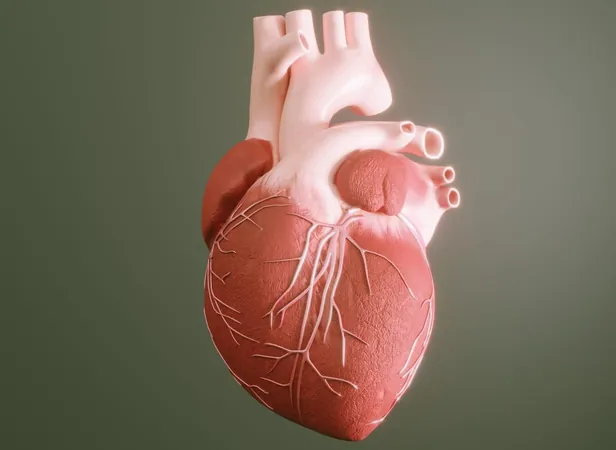
Groundbreaking Discovery: Heart Attack Protein GPNMB Opens New Doors for Cardiac Treatment
2024-10-25
Author: Sarah
Introduction
In a significant breakthrough, scientists at UCLA have unveiled a crucial protein known as glycoprotein nonmetastatic melanoma protein B (GPNMB) that plays a vital role in the heart's recovery process following a heart attack (myocardial infarction; MI). Led by Arjun Deb, a professor of medicine and molecular, cell, and developmental biology, and researcher Sivakumar Ramadoss, they conducted a series of in-depth studies to examine GPNMB's function in cardiac repair.
Research Findings
Using animal models, the team discovered that GPNMB is secreted by bone marrow-derived macrophage cells that migrate to injured heart tissues after a heart attack. This protein binds to the receptor GPR39, promoting essential heart repair processes. Notably, mice lacking GPNMB experienced rapid heart failure after an MI, indicating its critical protective role. In stark contrast, those with normal GPNMB levels showed significantly improved heart function when provided with additional circulating GPNMB protein.
Implications of the Study
“Without GPNMB, mice exhibited a dismal prognosis after a heart attack, displaying higher rates of heart rupture and severe fibrosis,” stated the researchers. Up to 67% of GPNMB-deficient mice developed extensive scarring versus only 8% in the control group just four weeks after the induced cardiac event.
Broader Impact on Cardiac Care
The implications of these findings are profound, especially as heart attacks are prevalent in the U.S., occurring every 40 seconds and leading to heart failure, which is a leading cause of death worldwide. The research highlights a crucial distinction between GPNMB as a mere biomarker and a potential therapeutic target. The identification of GPR39 as GPNMB’s receptor fosters exciting possibilities for drug development aimed at enhancing the heart’s self-repair mechanisms.
Future Directions
Previous studies had hinted at GPNMB’s connection to heart failure, but understanding its causal role opens avenues for innovative interventions. This research not only positions GPNMB as a promising avenue for improving post-MI outcomes but could also transform treatment protocols for heart conditions by mitigating scarring and enhancing heart performance.
Applications Beyond the Heart
Furthermore, the scope of GPNMB's role extends beyond the heart; it is expressed in various tissues across the body, suggesting potential applications in healing processes for other organs afflicted by ischemic damage, such as the brain and kidneys. Future studies will look into how GPNMB can accelerate recovery in these areas, reinforcing its importance in tissue repair.
Conclusion
As cardiovascular disease remains a leading health crisis, strategies that enhance cardiac regeneration are desperately needed. The identification of GPNMB as a significant player in cardiac repair could pave the way for novel therapies that not only improve the life quality of heart attack survivors but also address the broader challenges of tissue injury and repair in the body. This groundbreaking research signals a shift in the approach to managing heart failure, with GPNMB and GPR39 at the forefront of innovative cardiac care.

 Brasil (PT)
Brasil (PT)
 Canada (EN)
Canada (EN)
 Chile (ES)
Chile (ES)
 España (ES)
España (ES)
 France (FR)
France (FR)
 Hong Kong (EN)
Hong Kong (EN)
 Italia (IT)
Italia (IT)
 日本 (JA)
日本 (JA)
 Magyarország (HU)
Magyarország (HU)
 Norge (NO)
Norge (NO)
 Polska (PL)
Polska (PL)
 Schweiz (DE)
Schweiz (DE)
 Singapore (EN)
Singapore (EN)
 Sverige (SV)
Sverige (SV)
 Suomi (FI)
Suomi (FI)
 Türkiye (TR)
Türkiye (TR)